
Background information
Cannabis grow setup – Marty’s grow report, chapter 1
by Martin Jud
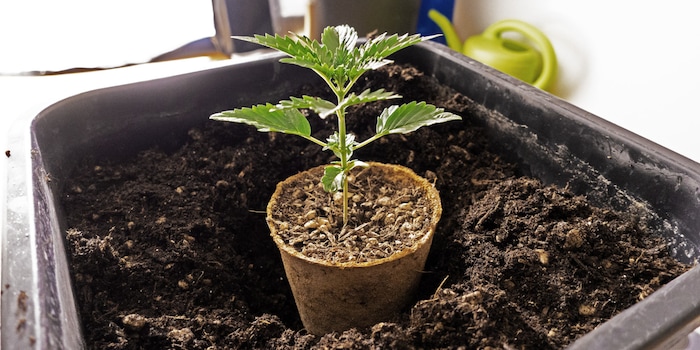
After two weeks of continuous sunshine, my cannabis plants are getting an upgrade. The ingredients: 13-litre plant pots, stones, earth and bird sand. The latter serves as a repellent against annoying animals.
Life ain’t all sunshine and rainbows. Unless you’re a weed plant living in my tent, enjoying 18 hours of artificial sunlight each day. Not a cloud nor pest in sight that might try to harm my precious grass.
No deer, no snails; not even a fungus gnat. However, this could change at any time. Depending on how the soil was stored before purchase, it may already contain eggs, larvae or even small fungus gnats. They rise up when you’re watering your plants, crawl back into the soil only to stick to the resin of the buds when they’re flowering. These kinds of invasions aren’t uncommon. That’s why I use the following trick for potting: sand barriers. Add those and the majority of flying insects won’t be able to poke their heads out of the soil in the first place.
By the way, it’s been two weeks since the first seeds sprouted. Find out which cannabis setup I used for my grow and what happened in the first five days here:
My legal Mota CBD Rich Auto plants are thriving. Even the one that was born with a malformation keeps on growing. However, it is lagging behind the other four as the animated GIF below shows.
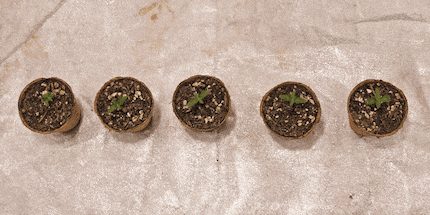
It’s day 14 and all my kids look healthy. I’m a proud papa of a 3.5 and four 6–7 centimetre tall girls.
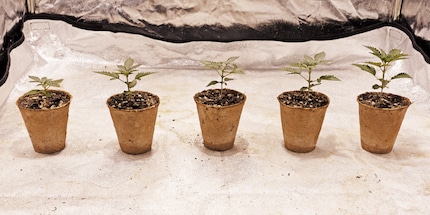
When I open the tent in the morning, I’m greeted by an artificial sun that warms my heart. I can’t shake the feeling that plants possess more consciousness than we think and maybe even empathy. I decide not to name my plants. It’s a strategy to avoid getting too attached, which could end in an emotional rollercoaster ride come harvest time.
The roots of my plants will probably soon outgrow their natural fibre container. Time for some repotting. I’ll start with Mary No. 5. Then I’ll replant Jane No. 4. No. 1, the former problem child is last but will get the best spot in the tent. If I put her directly under the lamp, she might catch up with her bigger siblings.
How to pot or repot pot:
1. Go for pots that hold at least 12 litres. Mine hold 13.
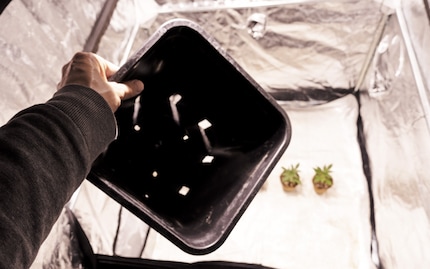
2. Inspect the pots and decide if they meet your requirements. My requirements tell me that my pots have holes that are too large. So I get myself some stones.

3. Take a look around and get your hands on some stones. It’s my lucky day. I find some on my very own balcony.
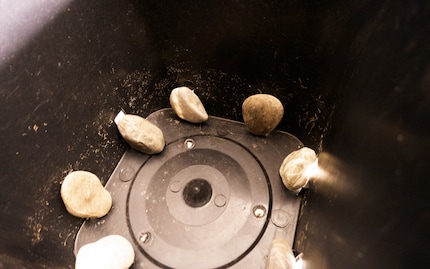
4. Now plug those holes with them.
5. Fill the pot with soil until just above the holes and carefully press it down until you have a reasonably level surface. I’m using Ricoter citrus plant soil with a PH value of 6.5. It’s made of wood fibre, compost, pumice stone and coco peat.
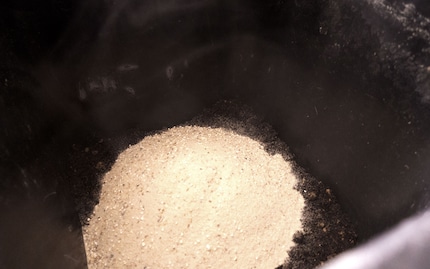
6. Time for some bird sand You could also go for a different type of sand. It just needs to be really fine. I pour a one-centimetre thick layer of sand on the soil. This is to prevent potential creepy crawlies creatures above the layer from making their way down and swarming out through the holes in the pot.
Please note: some sand is calcareous. This slightly increases the PH value of your soil. So far, I’ve experienced no negative effects, though. On the contrary, I think it has a positive effect, as soil tends to be too acidic after a while.
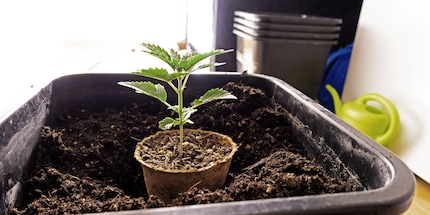
7. Fill the pot with earth and place your plant with its small pot in the middle.
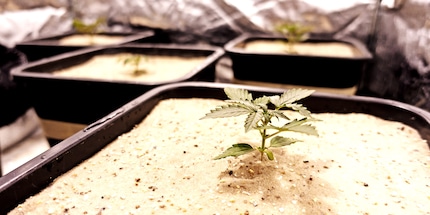
8. Gently press down the soil and level it. Time for a second great wall of sand, which should keep insects from swarming upwards. Invaders must die.
There they are, in all their little glory. Despite repotting them in their original fibre pots, the plants were exposed to stress. No. 1 is reacting to it with drooping leaves. By the way, hemp tends to develop a second sex if it’s under too much stress. For example, if the light is out for a long period of time, it’s not unusual for hermaphrodites to appear.
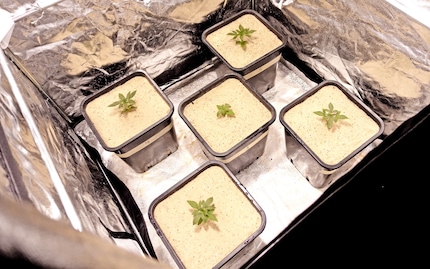
I reach for my watering can and remind myself not to give the plants too much to drink. I direct the spout at the centre of the pots and avoid getting the plants wet. Each pot gets about half a litre. This should keep them going for about two to three days. What’s key is to wait until the sand on the pots is dry and dusty before watering again.
I won’t be fertilising them in the coming weeks, as the soil contains enough nutrients for up to one month. In other words, I won’t be using organic flowering fertiliser until later. The same goes for an enzyme preparation called Cannazym, which I’ll be using for the first time the next time I water my babies. This will help the plants absorb nutrients. The salesperson who recommended the product years ago, told me to use it every time I water the plants. However, I’ve found that once or twice a fortnight is enough.
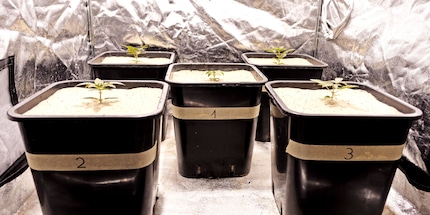
With all that done, it’s time to lean back and watch the plants grow. In the next chapter, I’ll hopefully be presenting you with the first cannabis leaves. Unless I get high. It’s also possible that the first plant will reveal its sex. Always wanted to know how to recognise a female cannabis plant early on? Click on my «Follow author» and I’ll fill you in.
I find my muse in everything. When I don’t, I draw inspiration from daydreaming. After all, if you dream, you don’t sleep through life.
Interesting facts about products, behind-the-scenes looks at manufacturers and deep-dives on interesting people.
Show all
Background information
by Martin Jud

Background information
by Ann-Kathrin Schäfer

Background information
by Martin Jud